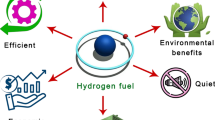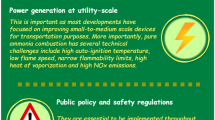Abstract
The Ba-CMK-3(x) (x was the Ba(NO3)2:CMK-3 mass ratio and equals to 5, 10, and 15 wt%) samples were prepared by the incipient impregnation method, which were used for the adsorption of NO + O2 at room temperature. The samples were characterized by the XRD, BET, TEM, TPD, TG, and DRIFTS techniques. The results showed that the CMK-3 and Ba-CMK-3(x) samples possessed an ordered two-dimensional hexagonal mesoporous structure, and Ba was uniformly dispersed on the surface of CMK-3. After Ba doping, the surface areas and pore size distributions of the Ba-CMK-3(x) samples were altered due to the synergistic effect of partial blocking of the channels by Ba and partial etching of the carbon materials by O2 produced from Ba(NO2)3 decomposition at high temperatures. The sequence in NO adsorption capacity was Ba-CMK-3(10) (108.1 ± 0.55 mg/g) > Ba-CMK-3(15) (106.2 ± 0.72 mg/g) > Ba-CMK-3(5) (102.3 ± 1.33 mg/g) > CMK-3(88.8 ± 1.15 mg/g), with the Ba-CMK-3(10) sample showing the best (NO + O2) adsorption performance. We proposed the two main adsorption pathways in the process of NO adsorption: (i) NO reacted with O2 to form NO2, part of NO2 were weakly adsorbed on the surface hydroxyl groups, part of NO2 were adsorbed to form the nitrite and nitrate species, and the left NO2 was disproportionated to the NO, NO2−, and NO3− species; and (ii) NO was directly oxidized to the NO2− species by the oxygen-containing functional groups in carbon, and then some of the NO2− species were transformed to the NO3− species directly or via disproportionation. The regeneration efficiencies of the Ba-CMK-3(x) samples were slightly inferior to that of the CMK-3 sample.










Similar content being viewed by others
Data availability
Yes.
References
Ambast M, Karinshak K, Rahman BMM, Grabow LC, Harold MP (2020) Passive NOx adsorption on Pd/H-ZSM-5: experiments and modeling. Appl Catal B Environ 269:118802. https://doi.org/10.1016/j.apcatb.2020.118802
Azambre B, Collura S, Trichard JM, Weber JV (2006) Nature and thermal stability of adsorbed intermediates formed during the reaction of diesel soot with nitrogen dioxide. Appl Surf Sci 253:2296–2303. https://doi.org/10.1016/j.apsusc.2006.04.027
Belhachemi M, Jeguirim M, Limousy L, Addoun F (2014) Comparison of NO2 removal using date pits activated carbon and modified commercialized activated carbon via different preparation methods: effect of porosity and surface chemistry. Chem Eng J 253:121–129. https://doi.org/10.1016/j.cej.2014.05.004
Borycz J, Tiana D, Haldoupis E, Sung JC, Farha OK, Siepmann JI, Gagliardi L (2016) CO2 adsorption in M-IRMOF-10 (M = Mg, Ca, Fe, Cu, Zn, Ge, Sr, Cd, Sn, Ba). J Phys Chem C 120:12819–12830. https://doi.org/10.1021/acs.jpcc.6b02235
Broqvist P, Panas I, Fridell E, Persson H (2002) NOx storage on BaO(100) surface from first principles: a two channel scenario. J Phys Chem B 106:137–145. https://doi.org/10.1021/jp0126457
Chen J, Cao FF, Chen S, Ni MJ, Gao X, Cen KF (2014) Adsorption kinetics of NO on ordered mesoporous carbon (OMC) and cerium-containing OMC (Ce-OMC). Appl Surf Sci 317:26–34. https://doi.org/10.1016/j.apsusc.2014.08.067
Chen Y, Wang H, Ji S, Pollet BG, Wang R (2018) Tuning the extent of porosity and composition of N-doped carbon materials by NaNO3 and its effect on electrochemical activity. Mater Res Bull 104:134–142. https://doi.org/10.1016/j.materresbull.2018.04.012
Fan X, Kang S, Li J (2020) Plasma-enhanced hydrolysis of urea and SCR of NO over V2O5-MoO3/TiO2: decrease of reaction temperature and increase of NO conversion. Fuel 277:118155. https://doi.org/10.1016/j.fuel.2020.118155
Gao X, Liu S, Zhang Y, Luo Z, Ni M, Cen K (2011) Adsorption and reduction of NO2 over activated carbon at low temperature. Fuel Process Technol 92:139–146. https://doi.org/10.1016/j.fuproc.2010.09.017
Geng Y, Jin K, Mei J, Su G, Ma L, Yang S (2020) CeO2 grafted with different heteropoly acids for selective catalytic reduction of NO with NH3. J Hazard Mater 382:121032. https://doi.org/10.1016/j.jhazmat.2019.121032
Guo Y, Tan C, Sun J, Li W, Zhang J, Zhao C (2020a) Biomass ash stabilized MgO adsorbents for CO2 capture application. Fuel 259:116298. https://doi.org/10.1016/j.fuel.2019.116298
Guo Y, Tan C, Wang P, Sun J, Li W, Zhao C, Lu P (2020b) Structure-performance relationships of magnesium-based CO2 adsorbents prepared with different methods. Chem Eng J 379:122277. https://doi.org/10.1016/j.cej.2019.122277
Hu Z, Li K, Wu X, Wang N, Li X, Li Q, Li L, Lv K (2019) Dramatic promotion of visible-light photoreactivity of TiO2 hollow microspheres towards NO oxidation by introduction of oxygen vacancy. Appl Catal B Environ 256:117860. https://doi.org/10.1016/j.apcatb.2019.117860
Ji Y, Bai S, Crocker M (2015) Al2O3-based passive NOx adsorbers for low temperature applications. Appl Catal B Environ 170-171:283–292. https://doi.org/10.1016/j.apcatb.2015.01.025
Jiang B, Lin B, Li Z, Zhao S, Chen Z (2020) Mn/TiO2 catalysts prepared by ultrasonic spray pyrolysis method for NOx removal in low-temperature SCR reaction. Colloids Surf A Physicochem Eng Asp 586:124210. https://doi.org/10.1016/j.colsurfa.2019.124210
Juárez JM, Ledesma BC, Gómez Costa M, Beltramone AR, Anunziata OA (2017) Novel preparation of CMK-3 nanostructured material modified with titania applied in hydrogen uptake and storage. Microporous Mesoporous Mater 254:146–152. https://doi.org/10.1016/j.micromeso.2017.03.056
Kim DH, Mudiyanselage K, Szányi J, Zhu H, Kwak JH, Peden CHF (2012) Characteristics of Pt–K/MgAl2O4 lean NOx trap catalysts. Catal Today 184:2–7. https://doi.org/10.1016/j.cattod.2011.11.024
Kong M, Liu Q, Guo F, Jiang L, Yao L, Ren S, Yang J (2018) Physicochemical properties of pine-derived bio-chars modified by metal oxides and their performance in the removal of NO. J Energy Inst 91:467–472. https://doi.org/10.1016/j.joei.2017.01.006
Kvasničková A, Kočí P, Ji Y, Crocker M (2020) Effective model of nox adsorption and desorption on PtPd/CeO2-ZrO2 passive NOx adsorber. Catal Lett 150:3223–3233. https://doi.org/10.1007/s10562-020-03186-z
Li R, Wu B, Chen Y, Ren G, Duan K, Liu T (2019) Influence of polyethylene glycol on the catalytic activity of MnFeOx for NO oxidation at low-temperature. Catal Lett 149:1864–1873. https://doi.org/10.1007/s10562-019-02793-9
Milt VG, Querini CA, Miró EE, Ulla MA (2003) Abatement of diesel exhaust pollutants: NOx adsorption on Co, Ba, K/CeO2 catalysts. J Catal 220:424–432. https://doi.org/10.1016/S0021-9517(03)00285-9
Nguyen HP, Palma Del Valle S, Marie O (2018) NO adsorption on K and Ba loaded on zirconia-titania NSR catalysts: a comparative study by in situ and operando IR spectroscopy. Appl Catal B Environ 231:391–399. https://doi.org/10.1016/j.apcatb.2018.03.002
Olchowski R, Zięba E, Giannakoudakis DA, Anastopoulos I, Dobrowolski R, Barczak M (2020) Tailoring surface chemistry of sugar-derived ordered mesoporous carbons towards efficient removal of diclofenac from aquatic environments. Materials 13:1625. https://doi.org/10.3390/ma13071625
Qi L, Sun Z, Tang Q, Wang J, Huang T, Sun C, Gao F, Tang C, Dong L (2020a) Getting insight into the effect of CuO on red mud for the selective catalytic reduction of NO by NH3. J Hazard Mater 396:122459. https://doi.org/10.1016/j.jhazmat.2020.122459
Qi J, Wei G, Sun X, Wang L, Li J (2020b) Enhanced removal for H2S by Cu-ordered mesoporous carbon foam. J Hazard Mater 396:122710. https://doi.org/10.1016/j.jhazmat.2020.122710
Raganati F, Alfe M, Gargiulo V, Chirone R, Ammendola P (2019) Kinetic study and breakthrough analysis of the hybrid physical/chemical CO2 adsorption/desorption behavior of a magnetite-based sorbent. Chem Eng J 372:526–535. https://doi.org/10.1016/j.cej.2019.04.165
Rattanaphan S, Rungrotmongkol T, Kongsune P (2020) Biogas improving by adsorption of CO2 on modified waste tea activated carbon. Renew Energy 145:622–631. https://doi.org/10.1016/j.renene.2019.05.104
Reşitoğlu OA, Altinişik K, Keskin A (2015) The pollutant emissions from diesel-engine vehicles and exhaust after treatment systems. Clean Techn Environ Policy 17:15–27. https://doi.org/10.1007/s10098-014-0793-9
Ryou Y, Lee J, Lee H, Kim CH, Kim DH (2018) Low temperature NO adsorption over hydrothermally aged Pd/CeO2 for cold start application. Catal Today 307:93–101. https://doi.org/10.1016/j.cattod.2017.02.025
Wakabayashi R, Tomita A, Kimura T (2020) Understanding of NOx storage property of impregnated Ba species after crystallization of mesoporous alumina powders. J Hazard Mater 398:122791. https://doi.org/10.1016/j.jhazmat.2020.122791
Wang M, Liu H, Huang Z, Kang F (2014) Activated carbon fibers loaded with MnO2 for removing NO at room temperature. Chem Eng J 256:101–106. https://doi.org/10.1016/j.cej.2014.06.108
Wang Z, Huang Y, Chen M, Shi X, Zhang Y, Cao J, Ho W, Lee SC (2019) Roles of N-vacancies over porous g-C3N4 microtubes during photocatalytic NOx removal. ACS Appl Mater Interfaces 11:10651–10662. https://doi.org/10.1021/acsami.8b21987
Wang S, Sima G, Cui Y, Chang L, Gan L (2020a) Preparations of lignin-derived ordered mesoporous carbon by self-assembly in organic solvent and aqueous solution: comparison in textural property. Mater Lett 264:127318. https://doi.org/10.1016/j.matlet.2020.127318
Wang H, Xiao K, Yang J, Yu Z, Yu W, Xu Q, Wu Q, Liang S, Hu J, Hou H, Liu B (2020b) Phosphorus recovery from the liquid phase of anaerobic digestate using biochar derived from iron−rich sludge: a potential phosphorus fertilizer. Water Res 174:115629. https://doi.org/10.1016/j.watres.2020.115629
Wei J, Chen S, Li Y, He Z, Geng L, Liao L (2020) Aqueous Cu(ii) ion adsorption by amino-functionalized mesoporous silica KIT-6. RSC Adv 1:254–2514. https://doi.org/10.1039/d0ra03051a
Wenshuo Zhang AXSA, Jinpeng Du AZYA (2020) Promotion effect of cerium doping on iron– titanium composite oxide catalysts for selective catalytic reduction of NOx with NH3. Catal Sci Technol 10:648–657. https://doi.org/10.1039/c9cy02292a
Wu X, Cheng J, Li X, Li Y, Lv K (2019) Enhanced visible photocatalytic oxidation of NO by repeated calcination of g-C3N4. Appl Surf Sci 465:1037–1046. https://doi.org/10.1016/j.apsusc.2018.09.165
Wu R, Ye Q, Wu K, Cheng S, Kang T, Dai H (2020) Adsorption performance of CMK-3 and C-FDU-15 in NO removal at low temperature. J Environ Sci 87:289–298. https://doi.org/10.1016/j.jes.2019.07.014
Yoon KS, Ryu SK (2010) Removal of NO using surface modified activated carbon fiber (ACF) by impregnation and heat-treatment of propellant waste. Korean J Chem Eng 27:1882–1886. https://doi.org/10.1007/s11814-010-0294-4
Zhang B, Liu W, Liang F, Zhang S (2019) NO adsorption and removal at low temperature by adsorption catalyst (Ce–Fe–Mn/ACFN). Catal Lett 149:3119–3131. https://doi.org/10.1007/s10562-019-02867-8
Zhang X, Huang Y, Yang J, Gao H, Huang Y, Luo X, Liang Z, Tontiwachwuthikul P (2020a) Amine-based CO2 capture aided by acid-basic bifunctional catalyst: advancement of amine regeneration using metal modified MCM-41. Chem Eng J 383:123077. https://doi.org/10.1016/j.cej.2019.123077
Zhang Y, Qi F, Liu Y (2020b) Fabrication of high B-doped ordered mesoporous carbon with 4-hydroxyphenylborate phenolic resin for supercapacitor electrode materials. RSC Adv 10:11210–11218. https://doi.org/10.1039/D0RA00561D
Zhang C, Yan Q, Gui R, Chen S, Gao Y, Yu F, Wang Q (2020c) The influence of Pt loading and dispersion on the NOx storage and reduction performance of Pt/K2CO3/Co1Mg2Al1Ox catalysts. Catal Today 339:148–158. https://doi.org/10.1016/j.cattod.2018.11.025
Zhao G, Zhao T, Yan X, Zeng L, Xu J (2016) Ordered mesoporous carbon/titanium carbide composites as support materials for platinum catalysts. Energy Technol 4:1064–1070. https://doi.org/10.1002/ente.201600069
Zuo Y, Yi H, Tang X (2015) Metal-modified active coke for simultaneous removal of SO2 and NOx from sintering flue gas. Energy Fuel 29:377–383. https://doi.org/10.1021/ef502103h
Funding
This work was supported by the National Natural Science Foundation of China (Nos. 21277008 and 20777005) and the National Key Research and Development Program of China (No. 2017YFC0209905).
Author information
Authors and Affiliations
Contributions
Runping Wu: methodology, data curation, and writing—original draft. Qing Ye: conceptualization, project administration, writing—review and editing, and supervision. Kai Wu: methodology and data curation. Hongxing Dai: writing—review and editing and supervision.
Corresponding authors
Ethics declarations
Conflict of interest
The authors declare that they have no conflict of interest.
Ethics approval and consent to participate
Not applicable.
Consent for publication
All of the authors agree to the submission of this manuscript.
Additional information
Responsible editor: Tito Roberto Cadaval Jr
Publisher’s note
Springer Nature remains neutral with regard to jurisdictional claims in published maps and institutional affiliations.
Rights and permissions
About this article
Cite this article
Wu, R., Ye, Q., Wu, K. et al. Efficient abatement of NOx emitted from automotive engines via adsorption on the Ba-CMK-3 adsorbents. Environ Sci Pollut Res 28, 21369–21380 (2021). https://doi.org/10.1007/s11356-020-12077-0
Received:
Accepted:
Published:
Issue Date:
DOI: https://doi.org/10.1007/s11356-020-12077-0




